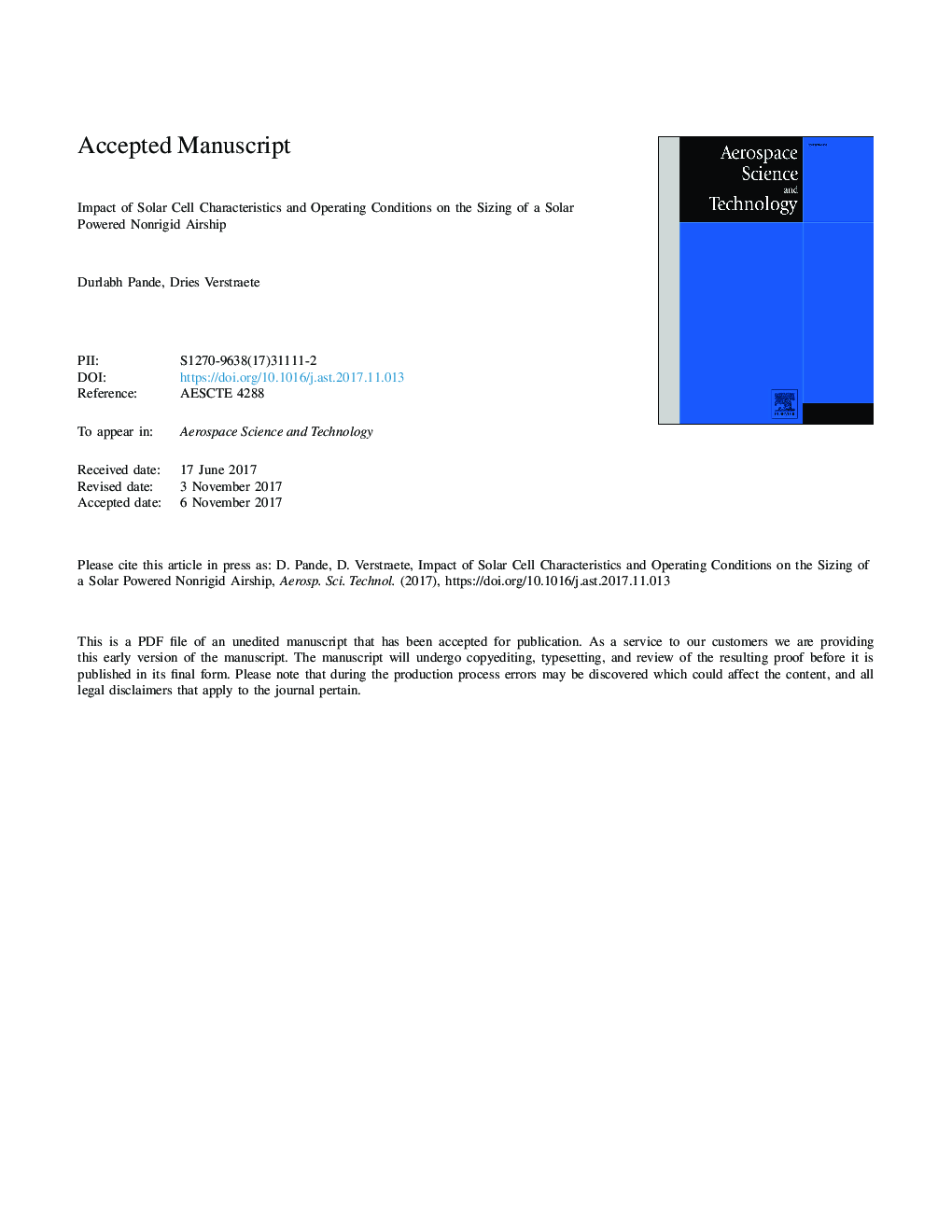| Article ID | Journal | Published Year | Pages | File Type |
|---|---|---|---|---|
| 8058303 | Aerospace Science and Technology | 2018 | 31 Pages |
Abstract
Non-rigid airships (blimps) use buoyant gas to counter their weight, and modern designs also incorporate solar panels and rechargeable batteries for propulsion. Combining these concepts offers the potential for indefinite flight duration, thus rendering blimps suitable for surveillance missions where station and altitude are maintained. However, a consistent analysis of the impact of solar cell characteristics, wind speeds and irradiance on the airship size is not available. Therefore, this work aims to study the effect of varying solar cell efficiency and weight, energy storage system specific energy, wind speed and solar irradiance on a solar powered airship's length, mass and solar coverage area. It is demonstrated that single-junction and triple-junction cells consistently lead to similar airship sizes and masses despite large differences in efficiency and weight. The use of thin-film cells, while competitive at wind speeds below 14 m/s, on the other hand, leads to a significantly greater mass and size at higher wind speeds. The specific energy of the storage system has a strong impact on length and mass, while cell coverage is unaffected. However, for energy densities above 1000 Wh/kg gains become small. Airship size is larger at higher altitudes, and solar irradiance is greater, which yields an airship with a significantly smaller solar cell area and thus lower mass. Sufficient propulsive power to overcome drag is unavailable where solar irradiance is low and wind speeds are high, although solar cell efficiency is also a contributing factor, and blimps employing higher efficiency cells can operate over a wider range in speed and irradiance. High speeds and low irradiance necessitate a large blimp size, weight and solar coverage, with speed affecting length and mass more acutely than irradiance, while both speed and irradiance affect solar cell proportion nearly equally.
Related Topics
Physical Sciences and Engineering
Engineering
Aerospace Engineering
Authors
Durlabh Pande, Dries Verstraete,
